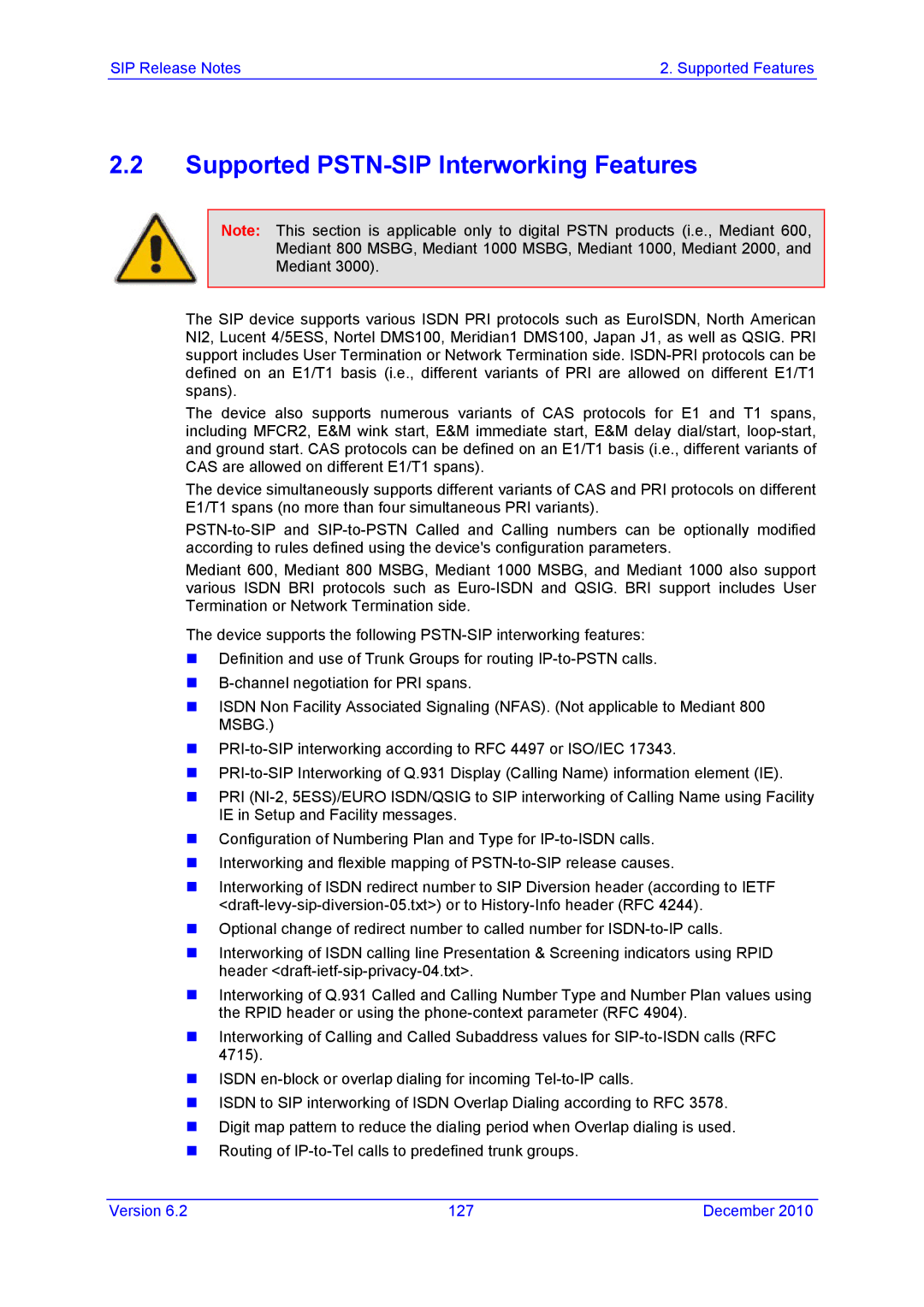
SIP Release Notes | 2. Supported Features |
2.2Supported PSTN-SIP Interworking Features
Note: This section is applicable only to digital PSTN products (i.e., Mediant 600, Mediant 800 MSBG, Mediant 1000 MSBG, Mediant 1000, Mediant 2000, and Mediant 3000).
The SIP device supports various ISDN PRI protocols such as EuroISDN, North American NI2, Lucent 4/5ESS, Nortel DMS100, Meridian1 DMS100, Japan J1, as well as QSIG. PRI support includes User Termination or Network Termination side.
The device also supports numerous variants of CAS protocols for E1 and T1 spans, including MFCR2, E&M wink start, E&M immediate start, E&M delay dial/start,
The device simultaneously supports different variants of CAS and PRI protocols on different E1/T1 spans (no more than four simultaneous PRI variants).
Mediant 600, Mediant 800 MSBG, Mediant 1000 MSBG, and Mediant 1000 also support various ISDN BRI protocols such as
The device supports the following
ISDN Non Facility Associated Signaling (NFAS). (Not applicable to Mediant 800 MSBG.)
PRI
Configuration of Numbering Plan and Type for
Interworking of ISDN redirect number to SIP Diversion header (according to IETF
Optional change of redirect number to called number for
Interworking of ISDN calling line Presentation & Screening indicators using RPID header
Interworking of Q.931 Called and Calling Number Type and Number Plan values using the RPID header or using the
Interworking of Calling and Called Subaddress values for
ISDN
ISDN to SIP interworking of ISDN Overlap Dialing according to RFC 3578. Digit map pattern to reduce the dialing period when Overlap dialing is used. Routing of
Version 6.2 | 127 | December 2010 |
